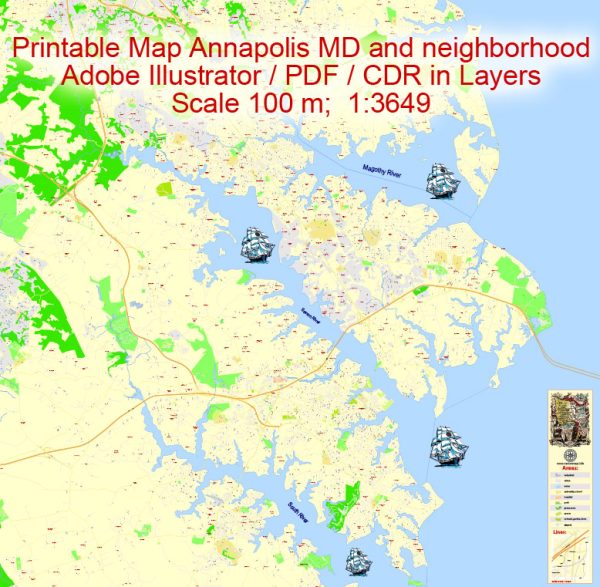Annapolis, Maryland, has a rich history of urban development that dates back to the 17th century. Here is an overview of its historical urban development:
- Colonial Era: Annapolis was founded in 1649 and served as the capital of Maryland from 1694 to 1783. The city’s layout and design were influenced by its colonial roots, with a grid pattern of streets and a central square. The Maryland State House, completed in 1772, is the oldest state capitol in continuous legislative use in the United States and remains a significant historical landmark.
- Early Economic Activities: Annapolis was a thriving port city during the colonial era, with maritime trade playing a crucial role in its early economy. Shipbuilding, tobacco, and the transshipment of goods were key economic activities.
- Role in the American Revolution: During the American Revolution, Annapolis played an essential role as a center for political and military activities in Maryland. The city also hosted the Annapolis Convention in 1786, which led to the Constitutional Convention in Philadelphia the following year.
- 19th Century: In the 19th century, Annapolis experienced periods of economic decline and growth. The city’s economy diversified, and education institutions like St. John’s College were founded. Slavery was also a significant part of the city’s history during this period.
- Civil War and Reconstruction: Annapolis served as a Union stronghold during the Civil War. The city’s maritime connections and proximity to the nation’s capital made it strategically important. After the war, Annapolis played a role in the Reconstruction era, and African Americans in the city gained more rights and opportunities.
- 20th Century: The 20th century saw a continued evolution of Annapolis. The city expanded beyond its historic core, and the Annapolis Historic District was established in 1965 to preserve its colonial and Federal-period architecture. Tourism became an increasingly important industry as the city’s historical and cultural significance drew visitors.
- Modern Development: Annapolis has experienced urban development and revitalization efforts in recent years. The city has sought to balance the preservation of its historic character with modern growth. New buildings and infrastructure have been added, and the city continues to be a center for state government and tourism.
- Cultural and Educational Institutions: Annapolis is home to various cultural and educational institutions, including the United States Naval Academy, St. John’s College, and numerous museums, historic sites, and events that celebrate its history.
- Challenges and Preservation: Preserving the city’s historic charm while accommodating modern development and addressing issues like traffic congestion and flooding have been ongoing challenges for Annapolis.
Today, Annapolis remains a unique city with a rich history, historic architecture, a thriving maritime community, and a strong connection to American colonial and revolutionary history. It is an essential part of Maryland’s cultural and historical heritage.


 Author: Kirill Shrayber, Ph.D.
Author: Kirill Shrayber, Ph.D.